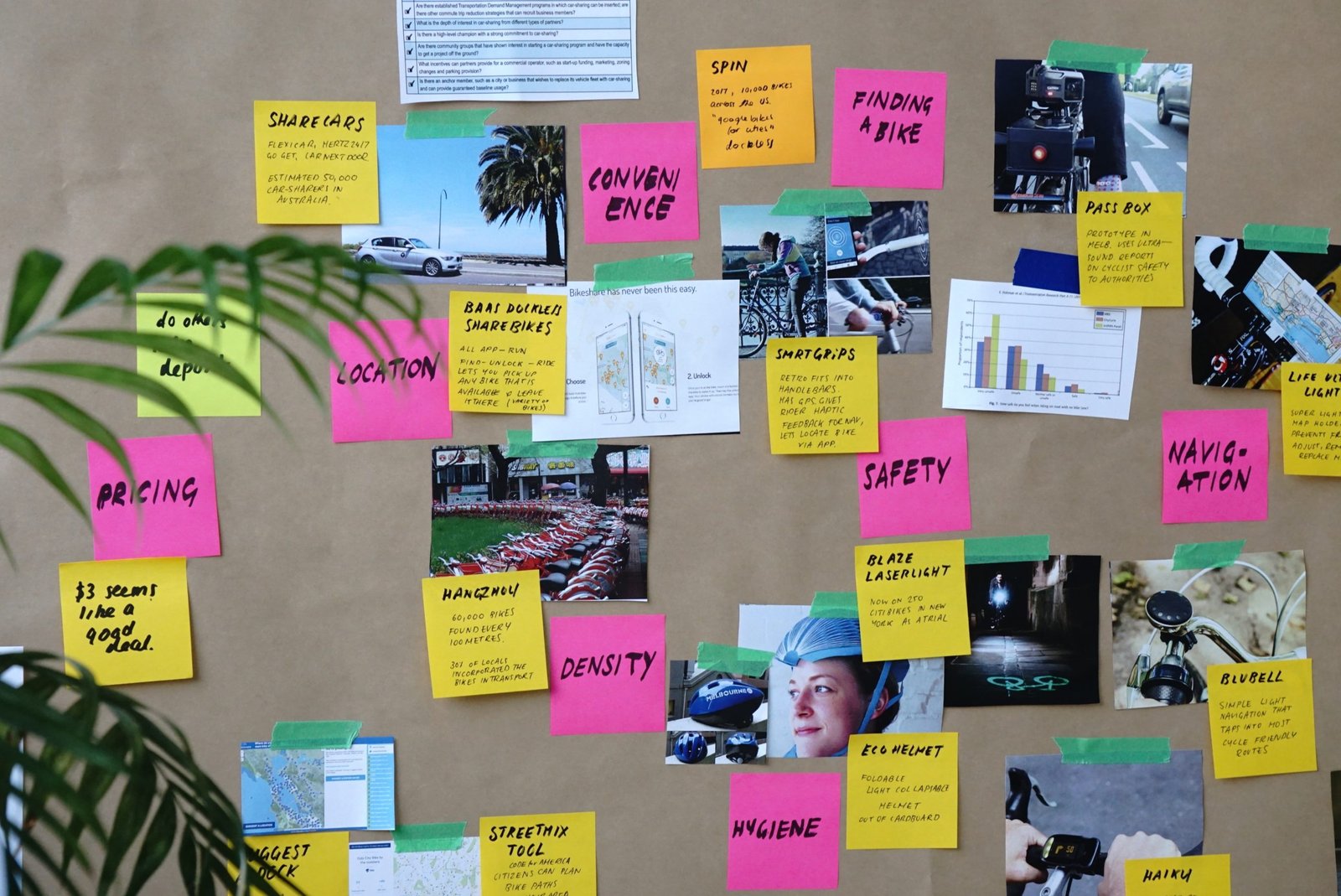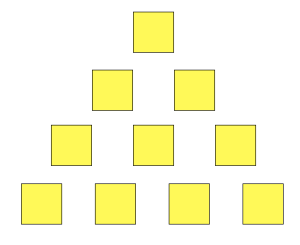3. Research
The design sprint descriptive terminology for this step is to determine the who’s, the requirements and the consequences of your choices. As you’ve chosen your top 5 to 10 notes, you will need to research how you can and will want to achieve your goals through the actions that you have listed.
This will include figuring out what you will need to do, who you will need to aid and/or support you, what you will need to achieve it all and by when. This will require a fair amount of self-reflection and if you can, discuss your thoughts with friends, family, significant others, partners, co-workers, etc… As they will be able to give you insights on your blind spots. Even if it feels uncomfortable, I do recommend doing this, as the insights will always help you shape your perspectives in ways you wouldn’t expect.
The purpose of these exercises is to place or write down all the thoughts and methods that relate to what you have done so far and wish to do. For example, if one of the sub-objectives to changing your career was figuring out how best to leverage your network, then you need to audit your network. Whatever system you are using, LinkedIn or Xing, you will want to research each person and find who is relevant to you for the change you have chosen to pursue. From there you can determine the requirements of who is more pertinent than others and what actions you will need to take to approach them and what the outcomes will likely be from that. And how to prepare for it. A useful piece could be on how to gamify networking.
The actual execution of all of this planning will truly happen with the next step though.
4. Problem-solving
The problem-solving step is where you will create and decide on the method, or ‘design’ that will help you solve the problem of your main objective; wanting to change careers.
As this is the meat of the entire process, you will now be using everything you’ve defined in steps 1 through 3 to develop your plan, roadmap, strategy, etc… for achieving your main objective. And as obvious as it may sound, do this by actually writing it down and in full. If you are a visual person and artistically inclined then start sketching out a rough roadmap. Draw and/or write out a very, very basic path of how the actions and incremental goals flow into each other from the work you’ve down in breaking down the primary objective and the brainstorming and research around it all.
The unfortunate reality of this part is that you will need to put in the hard work of figuring out the best method of how your journey will work. What I would suggest is using the Pomodoro technique of working on your plan for 25 minutes and then taking a break and then rinse repeat for four more times. Once you’ve done that, take a much longer break or end for the day depending on your mental stamina. Review what you’ve done so far, does it make sense to you of how you go from here to where you want to go with the research you’ve done? Don’t worry if it doesn’t or it’s not perfect at the moment, just leave it then, come back tomorrow with a fresh and rested mind. Go do something else and let the work you’ve done so far percolate in the back of your head.
Your aim here is only to have a very crude outline of your proposed journey. The refinement of it all will come in step 6 when you start designing it properly.
As this is also a gamification effort, while you are developing your path, you may want to make it more fun and engaging, as those were also some of the criteria for choosing and prioritising the sticky-notes. As you develop your path for your career change, think about what kind of gameplay would work well for you, what mechanics and elements need to be in place to motivate you the most and keep you focused on the prize. If you need some inspiration then our GBLE Toolkit page can help you with this.
5. Platform
This is not necessary for everyone, but if you are skilled in a programming language, UX design, graphic design, Excel, or some other discipline that allows you to make something then, by all means, do use it. If what you can create can aid you in some way to achieve your goals, then you should surely use every opportunity at your disposal.
I will say though that you should be careful when creating something elaborate that for example tracks your progress, what you do not want or need is a tangential project that distracts you and takes you away from achieving what you want. The best scenario is that what you create will allow you to change your career and can be used as a portfolio piece to showcase your skills and abilities.
And if you do create something, keep it very simple, always imagine it as the paper prototype version, it doesn’t need to be flashy or perfect for it to be effective for you.




